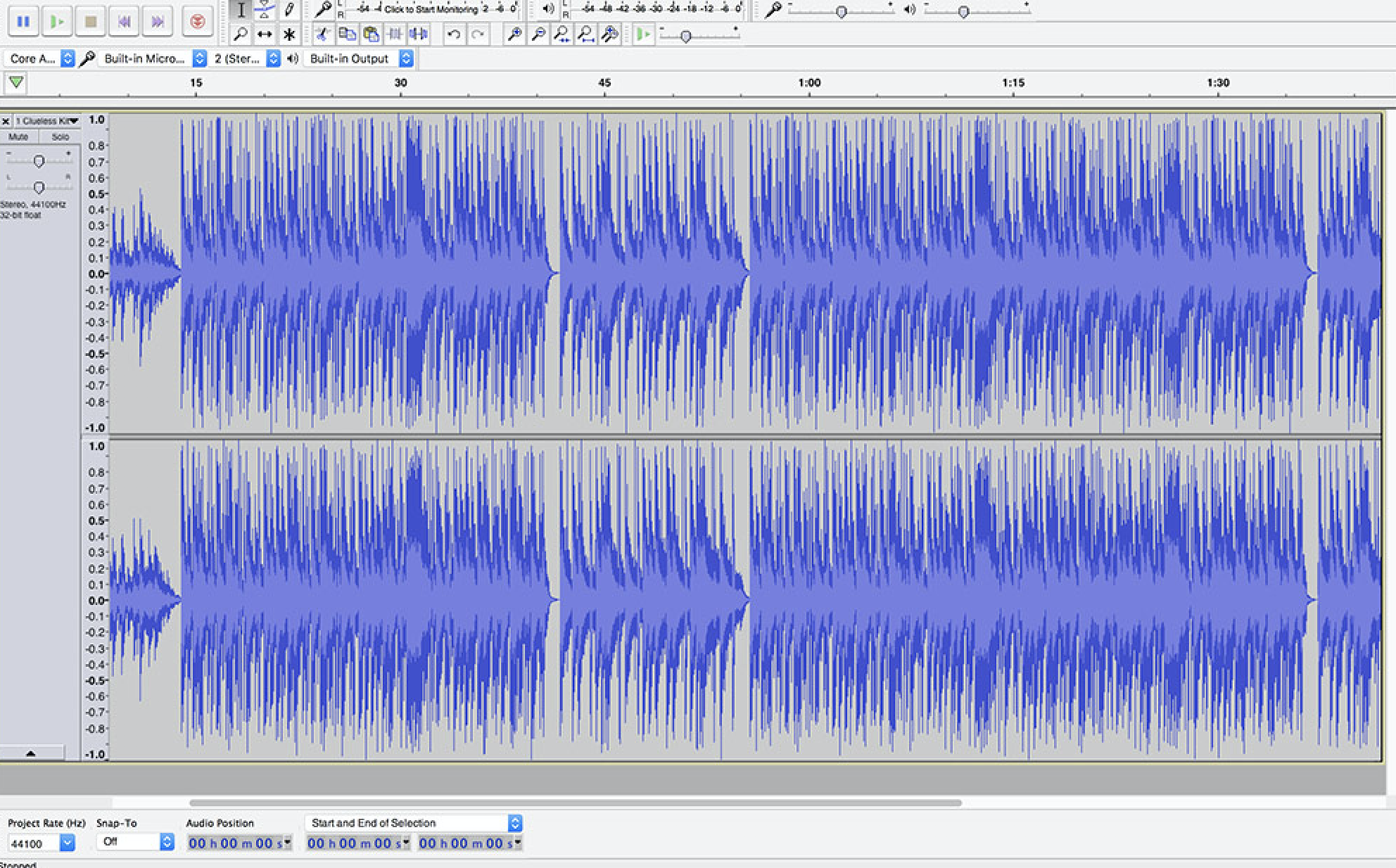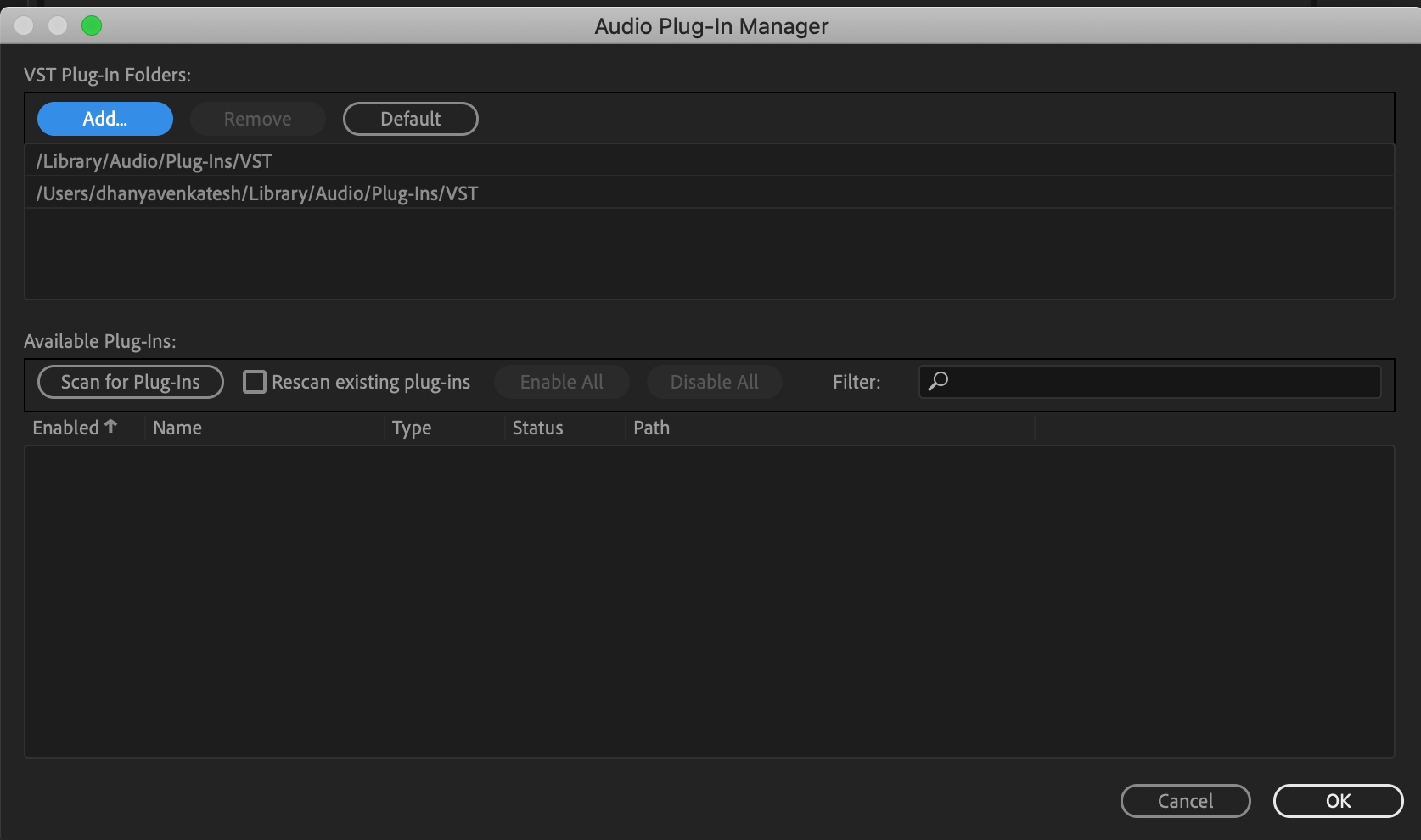Adobe Audition plugins can make your voice sound completely different! Here are two of my favourite Adobe Audition VST plugins that can make your voice sing without you having to sing a single note.
Adobe Audition Plugins
To load a newly installed ERA Bundle plug-in within Adobe Audition, you can follow these steps: Open a new session in Adobe Audition, go to the Effects menu and select the Audio Plug-in Manager. On the Audio Plug-in Manager window you have to select the VST plug-in folder. Alright, to answer this growing question I'm going to show everyone how to add VST Plugins in Adobe Audtion 3, and how to get them loaded and working.
Morphoder
This plugin has a range of presets right out of the box and you’ll hardly have to tweak the settings yourself as great vocoding voice effects can be created from the settings Waves Audio load in. It’s simple, easy to use and will add a new dimension to any radio jingle or DJ drop.
Waves Tune LT
Waves Tune LT plugin
Ever thought you could sing like T-Pain or Britney Spears? Now you can with Waves Tune (Lite). I recommend the lite version as it’s much less expensive than the full version and if you’re just getting started it has every autotune setting and feature you could need to make a voice start singing musical notes.
Silly Singing Video Examples
Audio producers often use this plugin (or similar) to create parody videos like The Nick Clegg Apology Song and Debate Highlights Songified!
What's covered

- Support policy
- VST plug-in handling
- Troubleshooting steps
Support policy
Effects plug-in support is limited to plug-ins that are included with the Adobe Audition CC installation and the VST and Audio Units technologies as they are implemented within the application. Adobe technical support does not support problems due to the use of third-party plug-ins. If a third-party plug-in directly causes problems, please contact the plug-in manufacturer for support.
VST plug-in handling
Adobe Audition supports third-party 64-bit audio plug-ins in VST 2.4, VST 3.0 formats for macOS and Windows, and Audio Units for macOS. Note: VSTi and virtual instrument synthesis plug-ins are not supported at this time. To locate plug-ins or manage their visibility in the application, use the Audition Audio Plug-In Manager. From the Audition menu bar, select Effects > Audio Plug-In Manager. Here, you can add new folders if you’ve installed VST plugins to custom locations, Scan for new plug-ins, or manage which audio plug-ins are available inside the application.
VST 2.4 plug-ins typically get installed to
Windows: C:Program FilesSteinbergvstplugins
macOS: /Library/Audio/Plug-Ins/VST/
VST 3.0 plug-ins are strictly installed to
Windows: C:Program FilesCommon FilesVST3
macOS: /Library/Audio/Plug-Ins/VST/
Audio Units plug-ins are strictly installed to the path below, and are registered with the OS:
macOS: /Library/Audio/Plug-Ins/Components
You should only need to add folders if you have installed VST 2.4 plug-ins to a custom location. Otherwise, Audition would populate the folders list with the default locations.
Adobe Audition Shortcut To Vst Plugins Plugin
Click the Scan for Plug-Ins button to search for new plug-ins on the system.
Note: Audition will scan and attempt to open each plug-in in a separate process. Plug-Ins which cause a crash, or are virtual instruments, will be marked as disabled.
After plug-ins have been scanned, they are available in the Effects menu. Near the bottom of the menu dropdown are 3 items: VST, VST3, and AU.
VST: Contains VST 2.4 plug-ins which are organized by manufacturer. For instance, all plug-ins by iZotope will be in a flyout submenu labeled “iZotope”
VST3: Contains VST 3.0 plug-ins which are organized via their internal metadata. For instance, noise reduction plug-ins might be in a flyout submenu labeled “Restoration”
AU: Contains Audio Units plug-ins (macOS only) which are organized by manufacturer. For instance, all plug-ins that ship with macOS are in a flyout submenu labeled “Apple”
Troubleshooting steps
Adobe Audition Shortcut To Vst Plugins Download
To benefit most from this document, perform the tasks in this section in order. Keep track of the tasks that you perform and the results of each, including errors and other problems. Adobe Technical Support can use this information to better assist you if you need to call.
Note: The procedures in this document are based on the default interface of Windows XP. If the interface is customized, some procedures may vary. Best tape emulator plugin vst. For example, a commonly encountered difference is the navigation to Control Panel from the Start menu: You may navigate Start > Settings > Control Panel instead of Start > Control Panel.
1. Restart Adobe Audition and deselect the plug-in from the VST plug-in manager.
Adobe Audition Shortcut To Vst Plugins Chrome
Stability issues can arise if a plug-in fails to initialize properly. The Audio Plug-in Manager lists all the plug-ins that Adobe Audition has scanned and allows you to turn each plug-in on or off.
To disable a plug-in that caused Adobe Audition to freeze during startup:
1. Restart Adobe Audition
2. Open the Audio Plug-in Manger from the Effects menu
3. In the list of plug-in files find the plug-in from step 1 and uncheck the box next to it.
4. Click OK.
Note: For more information about managing plug-ins see the 'Managing audio plug-ins' section of this document.
2. Run the plug-in in a session with a lower sample rate.
Adobe Audition can record, process and playback most hardware supported sample rates (normally up to 196k); however, not all plug-ins were tested or designed for high sample rates. Editing and mixing sessions at high sample rates while incorporating plug-in effects can cause a significant drop in the performance of Adobe Audition or may cause Adobe Audition to crash. If you mix audio in the multitrack or use the mastering rack with files or sessions that are over 48k (48000 samples) and notice problem, then test the plug-in at a lower sample rate.
To check the sample rate capability of the plug-in:
1. In Multitrack Main view, select File > New Session.
2. Choose 48000 in the New Session dialog box.
3. Import an audio file and place it on track 1.
4. Add the effect that you want to test.
5. Play the session.
If the plug-in performs as expected at 48k, then consider finding another plug-in to take its place, or lowering the sample rate of files or sessions.
3. Temporarily disable plug-in automation.
Adobe Audition Shortcut To Vst Plugins Free

Temporarily disable automation for individual tracks that have effects to test if effects automation is causing the problem. Within the Multitrack view, you can create new automation lanes for any available effect parameter. Not all plug-ins were tested or designed for automation and can cause a significant drop in the performance of Adobe Audition, or may cause Adobe Audition to crash.
To disable plug-in automation:
1. In Multitrack view, locate the track that has effects automation.
2. Change the Track Automation Mode to Off.
3. Play the session.
If the session plays as expected without automation, then consider replacing the plug-in with a similar plug-in, or enable Pre-Render the track.
For more information about
For more information about freezing tracks see Pre-render track effects to improve performance.